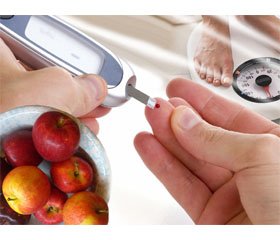The article was published on p. 64
Relevance. The problem of osteoporosis has become particularly important in recent years due to aging population and a significant increase of postmenopausal women number. Mortality due to complications caused by osteoporotic fractures in the population of Caucasian women aged of 50 years and older is 2.8 % corresponding to mortality rates from malignant breast tumors. On the other hand, there is present focus on osteoporetyc changes caused by endocrine disorders, including diabetes mellitus (DM) in which is associated with a variety of bone lesions (diabetic osteoarthropathy). It is clear that the combination of these two pathologies is very important as is an additional burden on quality of life and its duration.
Study purpose. Study of osteodestructive immunological markers and bone formation in women with T2DM.
Material and methods. We examined 101 persons (women of reproductive agedof 31–50 years: 14 — without menstrual dysfunction; 56 —postmenopausal women and 31 —postmenopausal women with T2DM). Additionally postmenopausal women were divided into groups according to age, duration of menopause, compensation of carbohydrate metabolism or type of species hypoglycemic therapy The study of bone metabolism was evaluated by content of bone remodeling factor (C-telopeptide of collagen type I β-CrossLaps) and marker of osteocalcinosteosynthesisin blood serum.
Results. It was found that concentration of β-CrossLaps in blood serum of postmenopausal women with T2DM is significantly lower compared with postmenopausal women without T2DM. It is shown that the content of osteocalcin in serum of women with T2DM is also significantly lower compared with women without T2DM suggesting the negative dynamics of change of osteosynthesismarkers with T2DM. The study showed that concentrations of both markers of bone metabolism status in postmenopausal women with T2DM were significantly lower compared with the corresponding age group of women without T2DM. It is shown that age-related changes of content of in biochemical indicators of osteogenesis/osteoporosis in patients with T2DM and without it are duplicated with unidirectional changes of content of markers of bone metabolism in women with different duration of menopause. We did not find any significant differences in blood markers of bone remodeling/osteosynthesis in different types of therapy, but there is only a tendency of β-CrossLaps content increase in the blood of patients receiving insulin therapy.
Conclusions. Received data of blood markers of bone remodeling in women with T2DM can be a valuable prognostic factor for the rate of loss of boneorganic portion. We should take into account identified reductionofbone remodeling and bone formation with DM which may be potential cause of increased risk of fractures with diseaseand increasedduration of menopause regardless of insulin therapy.

